#ttjrpg
Explore tagged Tumblr posts
Text

Have been sick these past few days, but being unable to work is depressing so I tried to kill time by making scenes in Foundry for Fabula Ultima. I think the results are turning good so here's a breakdown (as well as links for the ressources and modules used) for people who would be interested. The basis is generaly 2 to 4 tiles to represent the background, as well as a tile used as a roof tile for the character portraits.
The sort of character portraits menu is made of different interface items from Fire Emblem Three Houses. The portraits themselves are easily swappable placeholders, these ones are from Final Fantasy War of the Visions. Each portrait has an invisible tile which opens a corresponding character sheet using Monk's active tile trigger.

The backgrounds come from Fire Emblem Heroes. They all come already separated in several layers, and surprisingly most of them loop perfectly when it comes to overlays (such as dust or smoke) and underlays (ie. clouds, skies). They're an incredible ressource for Fabula Ultima combat screens! To have the skies and overlay move, I used Ripper's Tile Scroll module. It's super easy to use. If you have several overlays (like in the factory scene), placing the moving one between the immobile ones adds a sense of depth to the scene with very little effort.


For the rain and the snow, it's simply using ghost's FXMaster module. The FEH backgrounds also have a few panels of snow, cherry blossom petals, flowers, motes of light, etc... I don't think they'll look as good, but some of them can have their use. In a volcanic environment, having motes of fiery lights constantly raising from the bottom of the screen to the top using tile scroll could work to denote heat.

As for the tokens, I simply used the ones made for the quickstart by Tiny-Overlord. Flying Minotaur's portrait maker is also an incredible ressource for this kind of setup. As the name states, it can even be used to make portraits and not just token, so you could make your NPCs with it too. The mech on the left comes from Final Fantasy VI.
Have fun saving the world, adventurers!
#ttrpg#ttrpg community#foundryvtt#foundry#fabula ultima#fabula ultima vtt#vtt#tabletop#roleplaying games#rpg#jrpg#virtualtabletop#ttjrpg
47 notes
·
View notes
Text



Totally not obsessing over these new classes for Fabula Ultima 💙
10 notes
·
View notes
Text
Has anyone played Fabula ultima yet how's it like. I'm almost dome with the book and I really like it so far
12 notes
·
View notes
Text
Fabula Ultima Halloween Drop 2024

As is tradition, Need Games has released a new set of fun stuff for Halloween this year thanks to hard work from writer, Emanuele Galletto! 2022 brought us a whole new class in the Necromancer and 2023 gave a set of various spooky quirks, but this year there's over a dozen of horrifying heroics inspired by Halloween and horror folklore from around the world!
Become a masterful monster hunter like the infamous Van Helsing with Hunter's Trick!

Or perhaps imitate the tactics of the brutal Vlad the Impaler with Impaler Dragon.

Perhaps you have a scientific side? In that case, take a bit of inspiration and bring the construct companion you created to new heights with It Lives!

And this is just a sample! Download the full bonus content booklet for free at Need Games' website along with any holiday bonuses you may have missed.
8 notes
·
View notes
Text

[ Throwback Thursday ] I drew this for a Fabula Ultima oneshot I wanted to join in 2023. Unfortunately, it never came to be. I think the DM already forgot about it. 😅 ===== Artemis Fletcher and artwork © @sleepytenny Please do not steal. Usage with generative AI and NFT prohibited.
6 notes
·
View notes
Text
Fabula Ultima TTJRPG Review.
#IndieTTRPGMonth is in its final days. This game might be starting small, but I'm guessing it's going to grow rapidly over the next few months. Fabula Ultima features gorgeous art, slick mechanics, lots of advice for GMs, and a great flow.
It’s Ennie Awards time and this game is up for Game of the Year 2023. For what looks like a simple TTRPG, there’s actually a lot to unpack in Fabula Ultima TTJRPG from Emanuele Galletto, published by Need Games. It can be found on PDF here. There’s also this nifty adventure with pregenerated characters available to try it out for free called Fabula Ultima TTJRPG: Press Start.Fabula Ultima is…

View On WordPress
#animettrpg#FabulaUltima#indiettrpg#JRPG#rpgblog#rpgblogger#rpgwriter#TableTalkRPG#TTJRPG#ttrpg#TTRPGblog#TTRPGblogger#ttrpgdesign#ttrpgwriter
2 notes
·
View notes
Text
#roleplaying#roleplaying games#tabletop roleplaying#ttrpg#ttrpgs#fantasy#ultima#fabula ultima#ttjrpg#asian#gaming#tabletop gaming
0 notes
Text
I've been overwhelmed with the outpouring of support for At the Gates. Everyone who has backed so far and read the first preview has had nothing but kind words for it.
I really want this project to get to the people who will love it best. So please share and pledge!
I have been working for the past week on a rush project for a client that I am so fucking excited about and I can't wait until they hit the stretch goal on the BackerKit so y'all can see what I've been working on bc it fucking rocks and I'm so excited that @impernious brought me in on this.
But maybeeeee y'all can help this happen & also get a totally fucking awesome RPG written & illustrated by some of the best people I know.
So if you:
Like JRPGs
Like a fluid, compact and easy-to-use mechanical system
Like seeing queer content made by queer people
Want to see this project succeed wildly so that we get more of this
You should back At The Gates!
And even if you don't like those things, or you're not sure, you can always back the campaign for $5 just to help out & to get the preview chapters. One of the coolest things Onyx Path does is release the entire text of the book as it is at the time of the campaign over the course of crowdfunding. It has no art, and the text isn't final - it's still in process - but by the end of the campaign, you will be able to play At The Gates in its current form while you wait for the final book!
If you want to watch @impernious play Chrono Trigger & answer questions about At The Gates, you can do that here!
youtube
Back this game, omg I want y'all to see what we've been working on. I was up all night 2 nights ago getting stuff ready. @theonyxpath and D (and the rest of their team!) have cooked up some really, really good stuff, and I'm so excited that I got to play, too.
#at the gates#onyx path publishing#Youtube#ttrpg stuff#ttrpg design#ttjrpg#ttrpgs#ttrpg#creative#my gameplay#dnd#yoshitaka amano
107 notes
·
View notes
Text
7 Fantasy RPGs to fill the D&D-shaped Hole in your Life
So. It finally happened. Either Hasbro, or Wizards of the Coast, or someone else associated with Dungeons & Dragons finally did something so fucked-up that you've decided to swear it off entirely.
The problem is that for decades, there has been one obvious answer to the question of "What game with Dwarves, Longswords and Wizards in it should we play" and that was D&D, every time. Even their strongest rival in the past couple of decades was just an older version of D&D with a spit shine.
Now you find yourself adrift in a sea of possibility, with no signposts. There are names you've heard, but you have no idea which ones you'd actually be interested in, because you had always just assumed you'd be playing D&D until the heat death of the universe.
So let's take a look at a few games that want to fill that D&D-shaped hole in your gaming life, and examine what they're offering.
Disclaimer: I'm not covering the entire breadth and depth of the TTRPG industry here. I'm specifically going to be covering Fantasy RPGs that should appeal to D&D fans here. So if I didn't cover your favourite indie RPG, sorry. But there has to be a "First step" outside of the D&D bubble, and each of these games should fulfill that need.
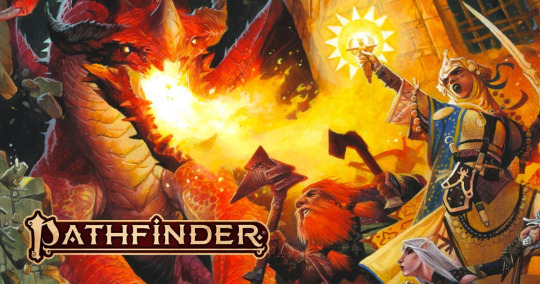
The Other "Kitchen Sink" Game: Pathfinder
If you can't bring yourself to keep playing the corporate game, but you still want something that offers as close to that gameplay experience as you can possibly get, your best bet at the time of this writing is probably Pathfinder 2nd Edition.
I say this as someone who very much did not vibe with the original Pathfinder, or its "D&D in space" sister product Starfinder. But at this point, I'd absolutely tell a newcomer to jump into Pathfinder 2E before I recommended they buy any WotC product.
To their credit, the 2nd Edition of Pathfinder does much more to, uh, find its own path by diverging from 3.5 edition and implementing new systems that take it into uncharted territory. The "Two Actions Per Turn" paradigm is often cited by its proponents as being a meaningful improvement over the 5E way of doing things.

The "TTJRPG": Fabula Ultima
One of the biggest success stories of the early 20's was Fabula Ultima from NEED Games in Italy. It came seemingly out of nowhere to win the ENnie Gold Award for Best Game of 2023. Since then it's become notoriously difficult to find in print, though it's still freely available as a PDF.
Fabula Ultima is a "TTJRPG," modelled after Japanese fantasy video games like Final Fantasy, Dragon Quest, Phantasy Star, Breath of Fire, etc. While it's firmly planted in the Fantasy genre, its gameplay will also very recognizable to fans of those types of games.
The major benefit of this conceit is that you can probably already picture how combat in FabUlt works in your mind: Two rows of characters take turns jumping and slashing at each other, or casting magical spells to harm, heal, or apply status conditions. There's no concept of "Spacing," but the game still manages to be mechanically intricate with lots of varied class abilities and status effects to apply.
D&D refugees looking for a game where you simply pick a class and fight some monsters, but aren't too particular about how they do that, will find a lot to love here. FabUlt leans much more heavily on storytelling mechanics than D&D does, so players who've been looking for something a bit more "Theater of the Mind" should be well taken care of here.

Final Fantasy Lancer: ICON
Like Fabula Ultima, ICON is a TTRPG that takes heavy inspiration from JRPGs, specifically tactical games like Final Fantasy Tactics and Tactics Ogre. It's from Massif Press, who also authored the surprise indie Mech combat hit Lancer.
And like Lancer, ICON is a game with two very distinct rulesets: Outside of combat, a "Fiction-first" narrative system inspired heavily by Blades in the Dark; In combat, a grid-based tactical skirmish game reminiscent of D&D 4th Edition. All backed by the gorgeous art of its author Tom Parkinson-Morgan, who also writes and illustrates the comic Kill Six Billion Demons.
ICON separates its "narrative" class system from its combat class system, giving each character two distinct character sheets that come into play at different times. Because those two systems don't have to cross over very much, each can be as intricate or as rules-light as it needs to be to promote the type of gameplay most appropriate for the situation.
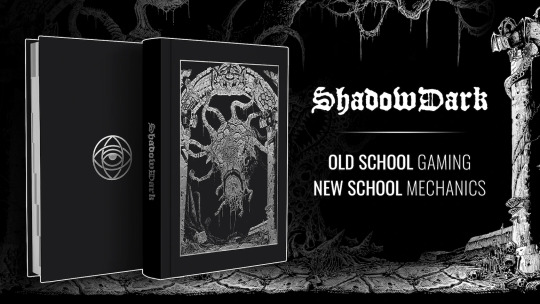
The Old-School Gateway Drug: Shadowdark
If you ever took a few steps outside of the walled garden that is D&D in the past few years, you will likely have read or heard of the OSR, or "Old-School Revival/Renaissance." Proponents of the OSR are players who yearn for an older style of Dungeon Crawling Survival Horror game that hearkens back to the early days of D&D, before the players became akin to superheroes.
Shadowdark aims to be a game that bridges the gap to that style of gameplay, without being totally unfamiliar to players who only ever learned 5th Edition mechanics. It's "Old-School gaming, modernized."
Aside from simply being a modern take on a D20 fantasy game, it freshens up gameplay using a mechanic called the "Torch Timer." It turns light into a resource that dwindles in real time. This serves to elevate the tension of the game as every minute that passes is one less minute of light on your torch. And when the torches run out, well... You can probably guess what happens next.
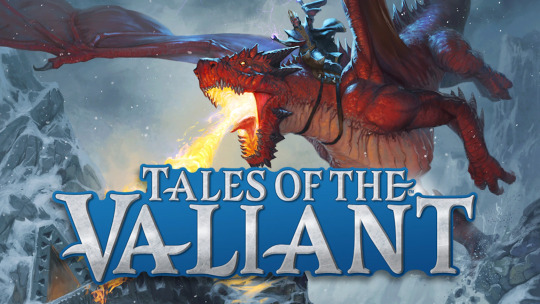
5th Edition with the Serial Numbers Filed Off: Tales of the Valiant
Tell me if you've heard this one before: Wizards of the Coast introduces sweeping changes to its "Open" license model, leading existing 3rd-party content creators to create their own version of an older ruleset to protect the viability of their backlog. It happened in the past, but what are the chances that happens a second time? Ha!
Well... It did happen again. This time, playing the role of the "Paizo" in this scenario is Kobold Press, who loudly declared that they were "Raising the Black Flag" in response. In order to ensure that there would always be a "Core Fantasy" ruleset that would remain compatible with their content, they announced Tales of the Valiant, which would essentially duplicate the 5th Edition ruleset with a bit of a spit shine, in much the same way that Pathfinder did for 3.5 Edition.
Tales of the Valiant will be the game for the D&D player who just wanted a rules refresh of 5th Edition, but also doesn't want to keep throwing money at the corporate hegemony. It should end up being "The 5E you can feel good about supporting," and that matters right now.
youtube
Matt Colville's Big Bet: The MCDM RPG
Kobold Press was not the only publisher of third-party D&D content to have a strong reaction to the OGL fiasco. Unlike Tales of the Valiant however, Matt Colville's response was to announce a fully new Fantasy RPG system, with no expectation of backwards compatibility with any edition of D&D.
MCDM's sights are firmly set on the "Post-Kitchen-Sink" future, and to that end their game is explicitly not trying to be the one game for every possible playstyle. It's Tactical, meaning you'll need a grid to play it on, and it's Heroic, meaning characters should feel powerful, and not like they're constantly one critical hit or failed trap-sensing check away from being decapitated.
This approach might seem like a massive risk considering how insanely powerful 5th Edition became at its peak. But a record-breaking crowdfunding campaign backed by over 30,000 people shows that there is at least an appetite for something new, and that there is a like-minded community of players ready and waiting to join you.
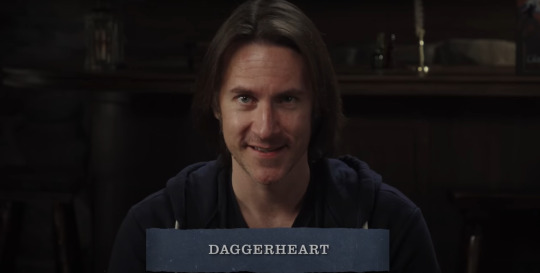
The Critical Role Game: Daggerheart
If the Kobold Press announcement was a shot across the bow, and the MCDM crowdfunder was a bomb dropped, then Daggerheart is a full-blown asteroid, streaking straight towards Wizards of the Coast HQ.
Daggerheart is an original Fantasy RPG from Darrington Press, the publishing arm of the Critical Role media company. That by itself should mean something considering how important CR is to the D&D brand, but there's more to talk about here. Though it superficially resembles D&D in a lot of ways, it has some extremely important differences. Namely, its use of "Powered by the Apocalypse" mechanics such as "Fail Forward" dice rolling and "No Initiative" combat.
While "PbtA" has become somewhat of a loaded term in the D&D community, Critical Role has an opportunity to overcome that stigma with the sheer force of their platform. I've made this case already in the past, but if they were to use their power to do for themselves what they did for 5th Edition, it would be the most significant threat to the Hasbro Hegemony to emerge since Pathfinder. Let alone taking just a slice, Daggerheart has the long-term potential to take the whole damn pie.
And more!
The games I've listed here are all theoretically capable of replacing the Corpo game as your "go-to" long-term game. Not all of them are fully playable as of this writing, but they all represent one possible future for the "Sword and Sorcery" RPG genre.
There are of course a whole plethora of other games out there beyond the limited scope of "Medieval Fantasy" that are just as valid and just as viable, if you're feeling a bit more adventurous.
If you're looking for something explicitly tactical like a miniature skirmish game, but still in the RPG genre, and you're willing to expand your choice of genre beyond Euro-centric Medieval Fantasy even further beyond ICON, you might be interested in Gubat Banwa or the aforementioned Lancer.
If you want a game that promotes a slightly more streamlined, less mechanically-intricate approach to combat while still giving you tons of monsters to kick the shit out of, you might want to check out the "Illuminated by LUMEN" family of games inspired by the games LIGHT and NOVA from Gila RPGs. It might even inspire you to write your own RPG!
If you're more interested in the Old-School Renaissance, you might want to check out Forbidden Lands, Dungeon Crawl Classics, Old-School Essentials, or MÖRK BORG.
If you like the idea of "Old-School Roleplaying" but are also willing to step outside of the fantasy genre into Sci-fi territory, you might be interested in Stars Without Number, its Cyberpunk sister product Cities Without Number, or Mothership.
Finally, if you just want a game that focuses on telling the best story rather than mindlessly killing monsters and acquiring loot, you might want to check out Blades in the Dark, Thirsty Sword Lesbians, Girl by Moonlight, Coyote and Crow, and many more Fiction-First games in the Powered by the Apocalypse and Forged in the Dark genres.
But most importantly: Just play more games! Don't just buy them, play them! The point of this whole exercise is to replace the monopoly with a plurality, for the sake of the health of the tabletop gaming industry.
Because the next time Hasbro lays off a bunch of WotC employees, there should be a much stronger, more diverse industry for them to land in feet-first. We should all want for the people who build the games we love to feel safe in their career choice. Not just for the sake of the ones who are already there, but for future prospective designers and artists who want to make their mark.
It should be viable to be a tabletop game designer outside of just making more D&D stuff forever, because as we've seen, it's not safe to assume that we can all just keep doing the same thing we've been doing and not get bit on the ass by it.
If we want that future, we have to take it into our own hands and build it ourselves. But if there's one group of people that knows about building something very big from very little, it's TTRPG players.
#ttrpg#icon rpg#icon ttrpg#mcdm#pathfinder#fabula ultima#kobold press#tales of the valiant#daggerheart
107 notes
·
View notes
Text
I've been continuing to work on Winning the Peace for the past few months, though life has gotten in the way a lot. Very busy with a surgery, planning a wedding, running two games, general exhaustion, etc.
It's been mostly working on layout and making player sheets and references. While the game jam was very good for getting the content written, it really did not prepare me to actually put it together into something more readable, which really doesn't make for good update posts. Also, the events oracle is like 20 8.5" x 11" pages, so it's very unwieldy in its current state, so I'm making a truncated reference that basically just has the mechanical effects.
I did get the opportunity to playtest it though with my local group due to some scheduling issues meaning we couldn't do our planned Girl by Moonlight game. A lot of things went well. The core voting system worked really well, and community creation runs smoothly. It looks like each year will take about an hour of play, so a full story/campaign should take roughly 3-4 sessions of 3-4 hours each. Some of the moves needed clarification, and a few need complete reworks of their fictional triggers. There's a few sections that need updates though.
In their current state, Representatives are functioning less as characters and more like stat sticks. I'm playing around with a few ideas to make Representatives more impactful and actual characters, and I'm playing around with a few things with that. One part of that is limiting the number of Debate Moves that can be used per year to make the choices more meaningful. The other part I am workshopping right now is having players define Representative's drives/personal values, and having those interact with the dice rolls for Debate Moves. Basically, if a Representative is taking an action in line with their personal beliefs, the roll is improved, while taking an action in opposition makes the roll worse. And these values aren't necessarily aligned with the Community's interests or needs, and don't affect the placement of votes, only Debate Moves. Still workshopping the exact mechanic though.
The other part I want to look at is the Event resolution. Currently, Events are resolved in whichever order the table chooses, largely because I was concerned about difficulty, but the issue is that a lot of Community Moves will then almost never trigger. So I'm planning on testing events drawn in order, or maybe having events resolve in suit order. Again, it's going back to the drawing board.
Once I have these changes written up, alongside the play materials, I'll post another update and get everything uploaded to Itchio. Life is going to continue to be super busy for the next few months, but I am hoping to have all of this done by June/July. So keep an eye out for all that.
Hope to have some more updates soon! Please enjoy Julius doing his best impression of me over the past several weeks.

(Also, on a completely unrelated note, I got to meet the official artist for the Fabula Ultima ttjrpg at C2E2 and got my book signed! Huzzah!)
7 notes
·
View notes
Text
Fabula Ultima 1
Let me preface this by saying that I have no idea how tumblr works. But what I'm _intending_ to do with this space is to use it to share my solo RPG adventures. Which at the moment is playing Fabula Ultima, the TTJRPG, combined with Mythic Game Master Emulator.
Let me introduce our first 2 Characters.

This is Puck. The genius inventor kid. (You can tell because of the goggles!). He's a Tinkerer 3/Loremaster 1/ Sharpshooter 1

This is Riza. She's the grandaughter of the village's guard captain. She's a Guardian 3/ Weaponmaster 2
Anyway, why don't we start the first scene!
The scene starts with a panning, top-down establishing shot. You see an Idyllic little village with pastures and farmland nestled in a little forested valley, where tufts of grass can still be seen peeking out of recently fallen snow. For a moment, what appears to be a flaming ball of light flashes across the screen. The camera shakes, and a flock of birds is noisily scared out of a tree, flying toward the camera and the screen goes black.
Riza is looking for Puck, who was supposed to be gathering healing herbs, but seems to have wandered off. But Riza knows her best friend well, and knows to find him wherever that shooting star landed.
Scene cuts to Puck, who finds himself at some kind of crash site. The tech seems out of place, but Puck is already waist deep in the engine bay as if he had been swallowed by a metal monster.
When Riza arrives, Puck had already dismantled several bits of the vehicle, and was rummaging through the pile of parts. He doesn't even notice the pair of frost-blue wolves stalking toward him. Riza calls out, and we start our first fight!
Puck is armed with a pistol and a combat jacket, and Riza has a full suit of plate and two shields. (We are not going to ask why she is walking around in full plate. That's just the way it is.)
The enemy is a pair of frost wolves, which are wolves. But frosty. It's an easy tutorial fight, and our 2 heroes come out of it with barely a scratch.
However, the crash and the subsequent fight seemed to have loosened earth on a near by slope, and there's a sudden landslide! Cue scene of Puck and Riza running for their lives until they find themselves in a cave, with the landslide closing off the way they entered.
With no choice but to move forward and hope there's another way out, they eventually come across an injured person. He's wearing robes, and there is some obvious battle damage that shows the person was probably in the crash earlier.

Puck pulls a potion from his pack and gets the hooded figure to drink up, healing him. Just then, there's a growl from deeper in the cave, which turns out to be a massive Cave Bear!
Fight 2, START
This fight is much more difficult. Our heroes make it out alive, but just barely, having to use up all of their potions as they whittled down the beast's ginourmous HP bar.
Here I spend a Fabula Point (FP) to declare that Hooded person has some emergency supplies that the bear was tucking into. Inside there's a tent (That's weirdly non-reusable but that's standard for JRPGs). They set up camp in the cave as the person pulls down their hood, revealing their face and introduces himself as Shaar. Prince of Khalabi. Formerly 7th in line to the throne after his father and elder siblings, but now on the run after his uncle instigated a coup.

He says that he's looking for someone who is supposed to live around here. He mentions a name. Puck and Riza look at each other with obvious confusion. Riza turns back to Shaar and says "I'm sorry. My grandmother passed away a few years ago.... this was her armor that I'm wearing."
FADE TO BLACK Scene change, the camera is now following a man in armor that is wierdly similar in style to what Riza was wearing (But obviously in a different color that I haven't decided on yet). He is on a flying ship of some kind, the same sort of outlandish tech as seen in the crash. He's overlooking the same valley.
A soldier comes by and kneels before giving a report. "Sir. We've found the escape pod, but not the prince. There is however village nearby, and it's possible that he went there to find aid. Soldiers are on their way there now."
"Damn him." says the commanding officer. "Why couldn't he make this easy and die like his father." The rail he's holding is suddenly crushed beneath his grip. "Send word to the helm. I'll be leading the search myself. We'll just have to burn the rat out."
FADE TO BLACK
4 notes
·
View notes
Text
We need 15 more people to get the first pin goal. They are adorable.
I want them all.
Please help.
https://www.backerkit.com/c/projects/onyx-path/at-the-gates/updates/6817#top
At the Gates
Is live on Backerkit now! Please go check it out. When you pledge to the campaign, you gain access to manuscript previews that we release throughout the campaign. The manuscript is fully written. We fund to get money for a traditional print run. So this game is getting made one way or another, but with your help, we can get the book into distribution, get gorgeous deluxe editions printed, and cool swag made!

You also get to see beautiful art by Mel Uran. And if you fund this, we can also afford some of the other amazing artists that I've been eyeballing who I know can knock out the style of art this game deserves.
Also, also, I will love you forever!
#kickstarter#crowdfunding#backerkit#onyx path publishing#ttjrpg#ttrpg design#ttrpgs#ttrpg#enamel pins#at the gates#exalted#jrpg
164 notes
·
View notes
Text
Love Final Fantasy / Anime / JRPGs and want to play it as a Tabletop Roleplaying Game? Try Fabula Ultima.
9 notes
·
View notes
Note
Have you heard of Fabula Ultima?
I only heard about it some few months ago, and I'm infatuated by it. It's a TTJRPG that's incredibly freeform in design while still retaining some structure, and allows both the GM and the players to shape the world they play in, harmoniously.
Interesting
5 notes
·
View notes
Text
TTRPGs to Try in 2025
For the past 2 years, I've gone over TTRPGs you can check out each year! This year is no different and I want to take a look at some great indie games to consider running, reading, or playing yourself this year. All games are linked to their Itch page in the title.
1. Beacon

Beacon is the perfect tactical TTRPG to fulfill all your Final Fantasy needs as you take on the role of chosen ones of your world to fight against an ever present darkness unique to your specific reflection. Running on a similar system to Lancer, but with refinements that take it to the next level, and downtime activites such as opening loot boxes, there's a lot of fun to be had with it! Fabula Ultima recently released its final atlas this year and is the ever popular top TTJRPG, but if you're looking for something that functions with a stronger wargame aspect with just as much narrative fun and character customization, consider giving Beacon a look. Perfect for those of you who love JRPGs and enjoy the many D&D 4e shootoffs we've gotten recently.
2. Stewpot

Recently released from Evil Hat, Stewpot is a cozy, yet melancholic narrative focused game where you take on the role of retired adventurers. Together, you run and operate a tavern while leaving your old life behind in a variety of minigames ala Warioware that allow for a mix of freeform and structured roleplaying. Through them, you'll slowly acquire more experience as a townsperson until eventually you get into the rhythm of things and your story ends happily. Your old life is behind you, one that was full of adventure, but a new one ahead, plenty of tales to await you. Excellent to play at the end of a high fantasy or scifi campaign or by itself, Stewpot is the perfect recipe for setting up how your characters' ends, as bittersweet as it may be.
3. Worldwizard

A worldbuilding TTRPG you'd often find in another book entirely, World Wizard, inspired by the ever popular Dawn of Worlds, is an amazing new tool and simply fun game to play before starting a campaign to build a world to explore and adventure in together. Going through 4 ages, players take turns adding things to a hex map. It may be civilizations, divine avatars, land masses, historic events, or more! The structured way it uses a point system allows things to stay down to earth, but ever interesting as you and your group work together to make something you can all be invested in.
4. Last Tea Shop

A melancholic game for just a party of one, Last Tea Shop has you take on the role of a tea shop owner at the border between the living and the dead. As you roll for various qualities like days past and the current weather, you'll meet customers, spirits on their way to the beyond, and prepare them tea and listen to their tale. You do this by consulting the weather and following question prompts, asking them and answering them. Eventually, they'll have to go and they'll leave some ingredients for you, but who you'll see next and when is a mystery.
5. Dust of the Traveled Road
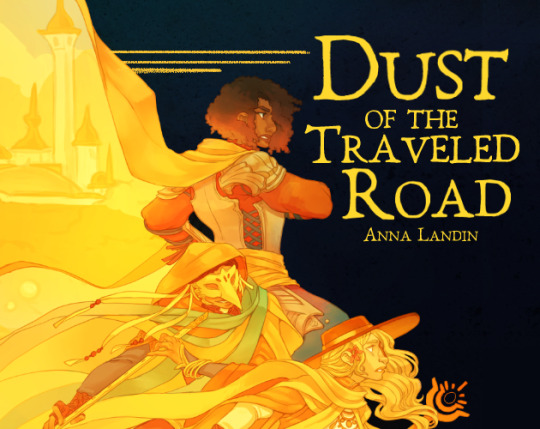
You are from the Dreaming City and you were drawn to the Waking Gates, now, you venture to Journey's End, a dream beyond a dream. Taking on a role between Knight, Adept, and Magus, you and your party make your way through various scenes and scenarios unlocked based on your choice of traits between Arms, Knowledge, and Magic of which you have 2 (one based on role and allowed to be the same as your role's trait). As you travel from destination to destination in any way you choose along the branching path, you'll collect dust, experience of how you've changed and grown on your journey. The journey will eventually come to an end, but will you be the same upon reaching it? An excellent narrative focused TTRPG for groups who love roleplaying and fantastical fantasy settings, Dust of the Traveled Road is incredibly easy to get into and a campaign only takes a couple of sessions. No game will ever be the same twice with the branching map and role system... and your own interactions of course! Great for oneshots.
10 notes
·
View notes
Text

"Isn't fire just invigorating?" ===== I rarely use Artemis. So I decided to use her for a Fabula Ultima oneshot I'll be joining. It was fun to draw her outfit again while tweaking a few things to make her more phoenix-like. ===== Artemis Fletcher & artwork © @SleepyTenny Please do not steal. ===== Want me to draw for you? My commissions are open!
3 notes
·
View notes